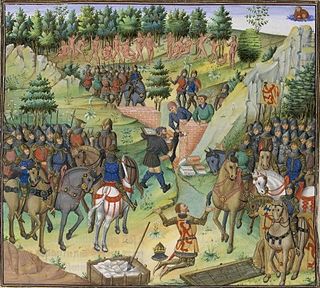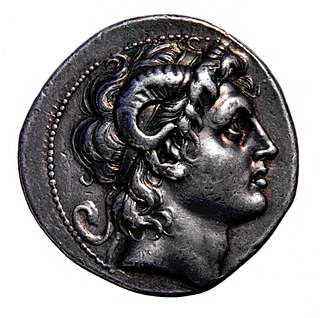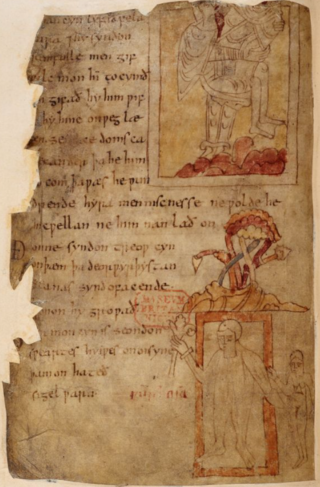
Gog and Magog or Yajuj and Majuj are a pair of names that appear in the Bible and the Quran, variously ascribed to individuals, tribes, or lands. In Ezekiel 38, Gog is an individual and Magog is his land. By the time of the New Testament's Revelation 20:8, Jewish tradition had long since changed Ezekiel's "Gog from Magog" into "Gog and Magog".

The story of Dhu al-Qarnayn is mentioned in Surah al-Kahf of the Quran. It has long been recognised in modern scholarship that the story of Dhu al-Qarnayn has strong similarities with the Syriac Legend of Alexander the Great. According to this legend, Alexander travelled to the ends of the world then built a wall in the Caucasus mountains to keep Gog and Magog out of civilized lands.

Dhu al-Qarnayn, appears in the Quran, Surah al-Kahf (18), Ayahs 83–101 as one who travels to east and west and sets up a barrier between a certain people and Gog and Magog. Elsewhere, the Quran tells how the end of the world will be signaled by the release of Gog and Magog from behind the barrier. Other apocalyptic writings predict that their destruction by God in a single night will usher in the Day of Resurrection.

The Alexander Romance, once described as "antiquity's most successful novel", is an account of the life and exploits of Alexander the Great. The Romance describes Alexander the Great from his birth, to his succession of the throne of Macedon, his conquests including that of the Persian Empire, and finally his death. Although constructed around an historical core, the romance is mostly fantastical, including many miraculous tales and encounters with mythical creatures such as sirens or centaurs. In this context, the term Romance refers not to the meaning of the word in modern times but in the Old French sense of a novel or roman, a "lengthy prose narrative of a complex and fictional character".

The Gates of Alexander, also known as the Caspian Gates, are one of several mountain passes in eastern Anatolia, the Caucasus, and Persia separating the Greco-Roman world from the Persian world. They are often imagined as an actual fortification, or as a symbolic boundary separating the civilized from the uncivilized world. The original Gates of Alexander were just south of the Caspian Sea, at Rhagae, where Alexander crossed while pursuing Darius III. The name was transferred to passes through the Caucasus, on the other side of the Caspian, by the more fanciful historians of Alexander.

Hikayat Iskandar Zulkarnain is a Malay epic in the tradition of the Alexander Romance describing fictional exploits of Alexander the Great (Iskandar), identified with Dhu al-Qarnayn (Zulkarnain), a king briefly mentioned in the Quran. The oldest existing manuscript is dated 1713, but is in a poor state. Another manuscript was copied by Muhammad Cing Sa'idullah about 1830.

Hikayat, which may be translated as "Romances", represent a genre of literature popular in Malay and Sikh literature and can be written in both verse and prose. Hikayat often mix past- and present-tense such that past events appear to be prophesied. Texts in this genre are meant to be publicly performed and are also often self-referential, in which they record examples of the recitation of other hikayat.
The Syriac Alexander Legend, is a Syriac legendary account of the exploits of Alexander the Great composed in the sixth or seventh century. For the first time in this text, the motifs of Alexander's gate, an apocalyptic incursion, and the barbarian tribes of Gog and Magog are fused into a single narrative. The Legend would go on to influence Syriac literature about Alexander, like in the Song of Alexander. It would also exert a strong influence on subsequent apocalyptic literature, like the Apocalypse of Pseudo-Methodius composed in the late seventh century. In Quranic studies, the representation of Alexander in the Legend is also seen as closely related to the Quranic figure named Dhu al-Qarnayn.

The Epistola Alexandri ad Aristotelem is a purported letter from Alexander the Great to the philosopher Aristotle concerning his adventures in India. Although accepted for centuries as genuine, it is today regarded as apocryphal. It is the primary source for most of the tales of the marvellous and fabulous found in later Alexander traditions.
The Sīrat al-Iskandar is a 13th-century Arabic popular romance about Alexander the Great. It belongs to the sīra shaʿbiyya genre and was composed by Mufarrij al-Ṣūrī in the 15th century.
Ṣaʿb Dhu Marāthid was a mythical figure described in the medieval Islamic tradition as the tenth South Arabian king of the Himyarite Kingdom.

The Horns of Alexander represent an artistic tradition that depicted Alexander the Great with two horns on his head, a form of expression that was associated originally as the Horns of Ammon. Alexander's horns came with connotations of political and/or religious legitimacy, including indications of his status as a god, and these representations of Alexander under his successors carried implications of their divine lineage or succession from his reign. Mediums of expression of the horns of Alexander included coinage, sculpture, medallions, textiles, and literary texts, such as in the tradition of the Alexander Romance literature. Rarely was anyone other than Alexander depicted with the two horns as this was considered unique to his imagery.

Alexander the Great was a king of ancient Greece and Macedon who forged one of the largest empires in world history. Soon after his death, a body of legend began to accumulate about his life and exploits. With the Greek Alexander Romance and its translation into numerous languages including Armenian, Syriac, Arabic, Persian, Ethiopic, and more, an entire genre of literature was dedicated to the exploits of Alexander in both Christian and Muslim realms. Alexander was also the one most frequently identified with Dhu al-Qarnayn, a figure that appears in Surah Al-Kahf in the Quran, the holy text of Islam, which greatly expanded the attention paid to him in the traditions of the Muslim world.
The Qiṣṣat Dhī ʾl-Qarnayn is a Hispano-Arabic legend of Alexander the Great preserved in two fourteenth-century manuscripts in Madrid and likely dates as a ninth-century Arabic translation of the Syriac Alexander Legend produced in Al-Andalus. In this respect, it is similar to the Hadīth Dhī ʾl-Qarnayn and is an example of the literary genre of Qisas al-Anbiya. It is to be distinguished from another text also known as the Qissat Dhulqarnayn found in the book of prophets by al-Tha'labi as well as the Qiṣṣat al-Iskandar, a text dating to the late eighth or early ninth century representing the earliest translation of the Alexander Romance into Arabic. The Qissat depicts the travels of Alexander whom it identifies with the figure named Dhu al-Qarnayn in Surah al-Kahf of the Quran, referred to as Dhulqarnayn in the text. The Qissat depicts Alexander (Dhulqarnayn) as a faithful believer and as a proto-Muslim who spreads monotheism through his conquests. It combines elements of pre-Islamic Alexander legends in addition to novel traditions developed in the oral Arab-Islamic tradition. Using the Islamic citation method of isnad, the text prefaces each narrative episode with a chain of transmitters that root in one of Muhammad's companions. Its primary transmitters are given as Ka'b al-Ahbar, Ibn 'Abbas, Muqatil ibn Sulayman, 'Abd al-Malik al-Mashuni, and 'Abd al-Malik b. Zayd. An English translation of the Qissat Dhulqarnayn was first produced by David Zuwiyya in 2001.
The Qiṣṣat al-Iskandar is the earliest narrative of Alexander the Great in the tradition of the Alexander Romance genre in the Arabic language. It was composed by ‘Umara ibn Zayd (767-815) between the late 8th to the early 9th century as a recension on the Syriac Alexander Legend. It is not to be confused with the Qissat Dhulqarnayn or the Sirat al-Iskandar.
The Hadīth Dhī ʾl-Qarnayn, also known as the Leyenda de Alejandro, is an anonymous Hispano-Arabic legend of Alexander the Great. It dates to the 15th century.
The Sadd-i Iskandarī was composed by Ali-Shir Nava'i (1441–1501) in the second half of the fifteenth century. It is the only rendition of the Alexander Romance in Chagatai Turkish. Alexander legends did exist in other forms of Turkish though, such as Taceddin Ahmedi's Iskendername.

The Armenian Alexander Romance, known in Armenian as The History of Alexander of Macedon, is an Armenian recension of the Greek Alexander Romance from the fifth-century. It incorporates many of its own elements, materials, and narratives not found in the original Greek version. While the text did not substantially influence Eastern legend, the Armenian romance is considered to be a highly important resource in reconstructing the text of the original Greek romance. The text continued to be copied until the eighteenth century, and the first Armenian and scholar to substantially study the text was Father Raphael Tʿreanc. He published an Armenian edition of it in 1842.
Alexander the Great was the king of the Kingdom of Macedon and the founder of an empire that stretched from Greece to northwestern India. Legends surrounding his life quickly sprung up soon after his own death. His predecessors represented him in their coinage as the son of Zeus Ammon, wearing what would become the Horns of Alexander as originally signified by the Horns of Ammon. Legends of Alexander's exploits coalesced into the third-century Alexander Romance which, in the premodern period, went through over one hundred recensions, translations, and derivations and was translated into almost every European vernacular and every language of the Islamic world. After the Bible, it was the most popular form of European literature. It was also translated into every language from the Islamicized regions of Asia and Africa, from Mali to Malaysia.
The Ethiopic Alexander Romance, also known as the Ethiopic Pseudo-Callisthenes or the Zēnā Eskender, is the work of an anonymous Christian and is the most important version of the Alexander Romance in the Geʽez language and the Ethiopian tradition. It was translated in the fourteenth century from an Arabic version of the Romance, which itself was translated from the earlier Syriac Alexander Romance. Although it originates from these sources, it does not follow their three-book structure. The text retains the essential plot from earlier romances, and is a witness to common motifs of Alexander such as his horns.












